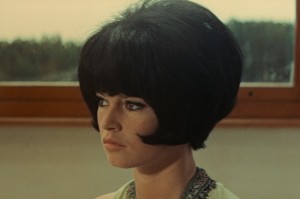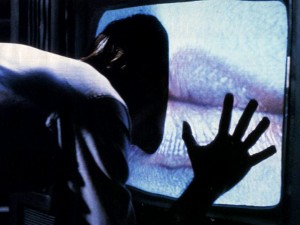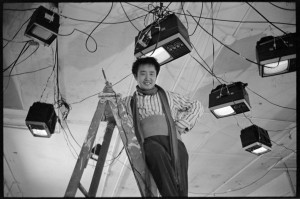Studio Ghibli Double Bill
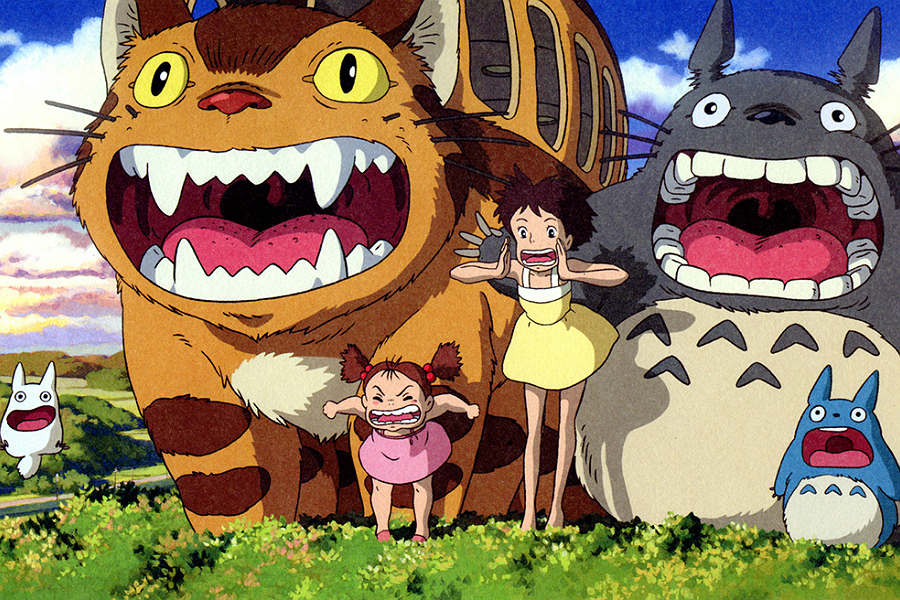
Screening at FACT this Sunday, Rachael Jones looks at a pair of very different Studio Ghibli films celebrating their 25th anniversaries…
The earliest known anime dates back to 1917; however, the characteristic anime style was not developed until much later, with the work of Osamu Tezuka in the 1960s. Like its comic-based cousin manga, anime has a huge audience in Japan – it’s used in video games, adverts, TV shows and films.
Interestingly though, it was the success of Disney’s Snow White and the Seven Dwarfs in 1937 which saw a boom in Japanese animation, with artists simplifying and refining many of the American studio’s animation techniques to produce their own films for a reduced cost.
The first full-length film, Momotaro’s Divine Sea Warriors was released in 1945, but it wasn’t until the 1970s that anime came into the mainstream, riding on the coattails of the increased popularity of manga. By the 1980s, it was in overseas markets – and one of the world’s leading animation studios was born.
Few animation studios have been as consistent in their output as Hayao Miyazaki’s Studio Ghibli (Ghibli, trivia fans, is based on the Arabic name for ‘sirocco’, a Mediterranean wind). Founded in 1985, its animated fantasies are made with just the right blend of humour, melancholy and whimsy to make them appeal to audiences of all ages.
Formed by Miyazaki in 1985, with Isao Takahata, the veterans of Japanese animation built the company in order to capitalise on the success of 1984’s Nausicaa of the Valley of the Wind. Success in Japan came rapidly – eight Ghibli films rank among Japan’s highest-grossing animes, with Spirited Away at the top of the list. That same movie also won the Best Animated Feature Oscar in 2002, becoming the first and (to date) only anime to do so.
Global recognition soon followed, as Ghibli inked an enormous international distribution deal with Disney in 1996. While this led to never-as-good English-language versions voiced by the likes of Dakota Fanning and relatives of Miley Cyrus, a strict no-cuts policy means no Ghibli film will ever become unrecognisably Americanised; this edict is strictly enforced; when Miramax head honcho Harvey Weinstein suggested Princess Mononoke could be made a little ‘friendlier’ from a marketing perspective, he famously received a Japanese sword in the post, complete with the message ‘no cuts’.
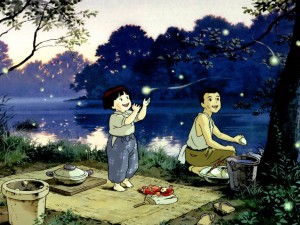
This Sunday, FACT are screening a Ghibli double-bill, by way of marking the 25th anniversaries of a pair of films. Grave of the Fireflies is one of only a few Ghibli projects not directed by Hayao Miyazaki, with co-founder Takahata both scripting and directing. Based on a 1967 semi-autobiographical novel by Akiyuki Nosaka, the film tells the story of Seita, a young boy who takes responsibility for his younger sister Setsuko when their mother dies.
Set in Japan during World War II, it has long been viewed as an anti-war statement, due to the graphic depictions of wartime’s repercussions on society; however, ask Takahata and he’d tell you the point is to dispel the notion that people living in wartime are more noble than others – an inferiority complex of sorts, perpetuated by the typical war movie.
Grave also conveys an image of the brother and sister living a failed life due to isolation from society during arguably the darkest point in Japan’s history; declaring war to be nothing more than society’s failure to protect its own people. A laugh a minute, it is not, but it changed the way we view animation forever.
The film’s initial theatrical release was accompanied by the significantly more light-hearted My Neighbour Totoro as a double feature. Billed as “one of the most moving and remarkable double bills ever offered to a cinema audience”, it was instead a dismal failure. While both films were marketed toward children and their parents, the rather un-cheerful leanings of Grave of the Fireflies (a warning to the uninitiated, you may need Kleenex) put audiences off checking them out. The financial fallout was so catastrophic, in fact, that it wasn’t until Totoro merchandise started flying off the shelves that the studio’s finances stabilised.
A Miyazaki film, My Neighbour Totoro was initiated following the completion of Nausicaa and follow-up, Castle in the Sky. Infinitely more family-friendly than its onscreen buddy, Totoro follows the two young daughters of a professor as they discover soot-sprites and other woodland spirits – the totoro, or trolls, of the title – after moving home to be closer to their ill mother.
At face value, it’s not difficult to see why the original double release of Fireflies and Totoro failed. While Takahata’s treatise on war movies and the failings of society is about as bleak an animated film as you’re ever likely to see, Miyazaki’s family fable is unusually light on tension and conflict. No plot twists to speak of, either.
Instead, it’s based on experience rather than threat, situation rather than plot. Both innocent and awe-inspiring, this is a film that captures the magic of childhood more successfully than Disney, or even Pixar, could ever hope to. It is, as critic Roger Ebert put it, “a children’s film made for the world we should live in, rather than the one we occupy.”
Let’s be honest, does it even matter if two films that screen together are poles apart? We don’t think so, as now – some 25 years after their original release – both are rightly viewed as game-changers, titans in their own right.



